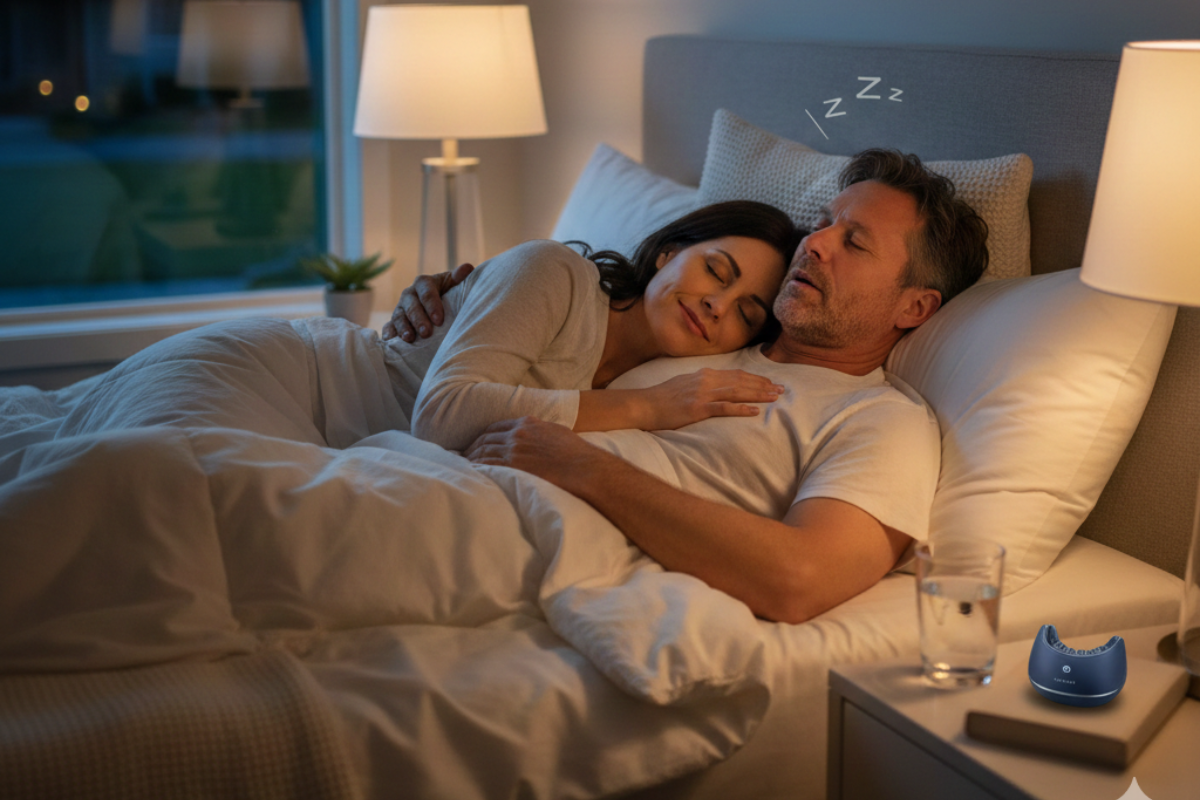Free Shipping - On Orders Over $175 (USA, Canada, UK, & AU)

Why Do People Talk in Their Sleep?
April 24, 2018 2 min read
Ever wonder why people talk in their sleep? Maybe you know someone who does, or perhaps you’ve been told you do it yourself. Sleep talking, also called somniloquy, is a common type of sleep disorder, though it’s typically short-lived and rarely occurs. People who talk in their sleep often sound much different than they do when they’re awake since the brain normally relaxes or even disables speaking muscles during sleep. Due to reduced muscle strength, sleep talking can range from full conversations to mumbled gibberish.
One of the most likely reasons for sleep talking is being sleep deprived, a state which could be caused by several factors such as stress, daytime drowsiness, depression, and fever. Genetics can also play a role in sleep talking, as can consuming alcohol or using drugs before bed.
Sleep talking can be caused by parasomnias (a class of sleep disorders that involve abnormal behaviors, movements, perceptions, emotions, and dreams) such as night terrors, confusional arousals, sleepwalking, and REM behavior disorder. Sleep apnea, a condition where breathing is interrupted during sleep, can also cause it. If sleep talking starts after age 25, it’s more likely to be associated with medical or psychiatric issues.
Males and children are more likely to talk in their sleep, although anyone can experience it. Approximately 50% of children sleep talk at some point in their childhood but usually grow out of the habit by the time they are teens, and only five percent of adults are estimated to be sleep talkers.
Sleep talking isn’t physically harmful but it can be just as annoying as loud snoring is for anyone else sleeping in the room, and embarrassing for the person who talks during sleep.
How do sleep cycles influence sleep talking?
During sleep, the body goes through several sleep cycles consisting of different stages including light sleep, deep sleep, and rapid eye movement (REM) sleep. Throughout the night, the order and quantity of each stage changes.
Sleep talking is more likely to occur during deep sleep and as the body transitions between sleep stages. During these transitions, the part of the brain used for speech can be more awake than the conscious and other parts of the brain that are entering a new stage of sleep.
Some scientists believe sleep talking also occurs more often during the REM stage of sleep when dreams occur, while one part of the brain is active and others remain in sleeping mode.
Are there treatments for sleep talking?
It’s important to rule out psychiatric or medical issues such as sleep apnea which could be contributing sleep talking. Mild obstructive sleep apnea often benefits from treatment using a mouthpiece such as Good Morning Snore Solution.
After ruling out medical and psychiatric issues, the primary way to deal with sleep talking is to practice good habits before going to bed, also referred to as sleep hygiene. Commit to going to bed and getting up at the same time each day and getting between seven and nine hours of sleep every night. Eat light before going to bed and don’t drink alcohol too late since it can disrupt sleep.
Also in Blog

Is Your Snoring a Sign of Something More Serious? Unpacking the Science of Sleep
December 05, 2025 3 min read
When you snore, what's actually happening?

Can Turkeys Snore Or Get Sleep Apnea?
November 26, 2025 2 min read

Foods from Every Food Group which Promote Sleep
November 20, 2025 4 min read
Join our Insiders Club
Every week you will receive specials, discounts, and giveaways.
Categories
- Better Sleep
- depression
- Fitness
- funny animal
- Global Citizenship
- health
- Mental Health
- mouthpiece
- nutrition
- pillow
- Productivity
- relationships
- sleep
- sleep apnea
- sleep deprivation
- Sleep Tech
- snoring
- snoring humor
- snoring jokes
- snoring sounds
- stop snoring
- StopSnoringStartLiving
- technology
- Tongue displacement
- travel
- video
- Young Adult

